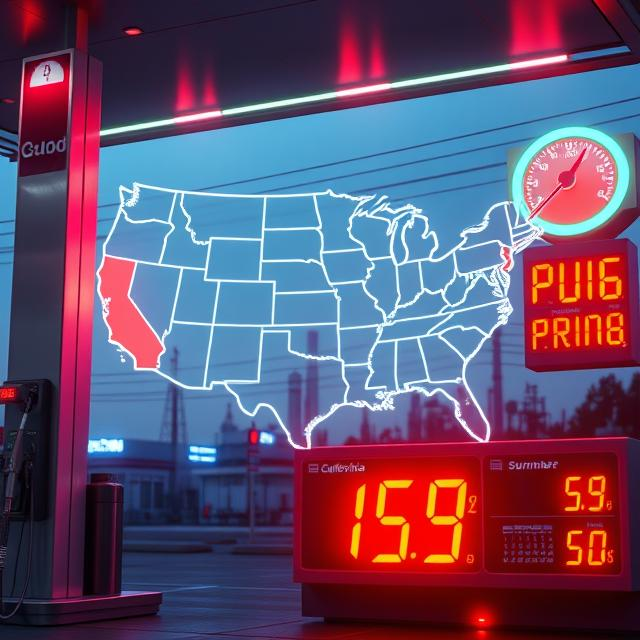Gas prices are poised to climb in the coming weeks due to refinery maintenance, unexpected outages, and the annual switch to more expensive summer fuel blends. These factors are creating a ripple effect, particularly in regions like California, where prices are already surging.
National Gas Prices Edge Higher Amid Supply Challenges
According to AAA, the national average for gasoline reached 3.16pergallononWednesday,up0.04 from a month ago but $0.11 lower than the same time last year. Patrick De Haan, head of petroleum analysis at GasBuddy, attributes the increase to refinery issues on the West Coast. “Refinery maintenance and outages have created a ripple effect, pushing prices higher in many areas,” he explained.
De Haan predicts the national average could rise by 0.25to0.60 by mid-April, with the West Coast likely experiencing the steepest hikes. Tom Kloza, OPIS global head of energy analysis, forecasts a 0.20to0.33 per gallon increase before prices peak between Easter and Cinco de Mayo.
Refinery Outages and Summer Fuel Transition Add Pressure
Refineries are currently undergoing planned seasonal maintenance, which has tightened fuel supplies. Compounding the issue, a February 1 fire at the Martinez refinery in Northern California forced the shutdown of nearly all its units, further straining the market. These disruptions coincide with the annual transition to summer fuel blends, which are more costly to produce due to stricter environmental regulations.
Western states, including California, are the first to make the switch. California already has the highest gas prices in the nation, with averages jumping 0.41overthepastmonthto4.85 per gallon. Neighboring states like Washington and Nevada have also seen significant increases, with prices rising to 4.15and3.89 per gallon, respectively.
Long-Term Outlook: Relief Expected Later This Year
Despite the short-term spike, analysts anticipate gas prices will ease in the second half of the year. Kloza predicts retail prices could fall below 3 per gallon by late 2025, 0.11 per gallon drop in 2025, followed by a 6% decrease in 2026. These declines are expected to be driven by lower crude oil prices and improved vehicle fuel efficiency.
Oil Market Trends and Global Influences
Oil futures rose 1% on Wednesday, with West Texas Intermediate crude trading near 72.50perbarrelandBrentfuturesabove76. OPEC+ delegates, including Russia, are considering delaying output increases, which could support higher prices in the near term.
However, global factors could shift the market. For instance, a potential easing of sanctions on Russia or a resolution to the Ukraine conflict could increase oil supply, putting downward pressure on prices. Additionally, concerns over a US tariff-induced trade war and its impact on global economic growth have added uncertainty to the oil market.
Goldman Sachs recently warned that persistent tariffs could weigh on global GDP and oil demand, potentially leading to lower prices in the medium term.
Conclusion
As refinery outages and the transition to summer fuel blends create a ripple effect in gas prices, drivers in certain regions—especially the West Coast—should prepare for higher costs at the pump. While short-term spikes are expected, long-term forecasts suggest relief later this year as market conditions stabilize.



